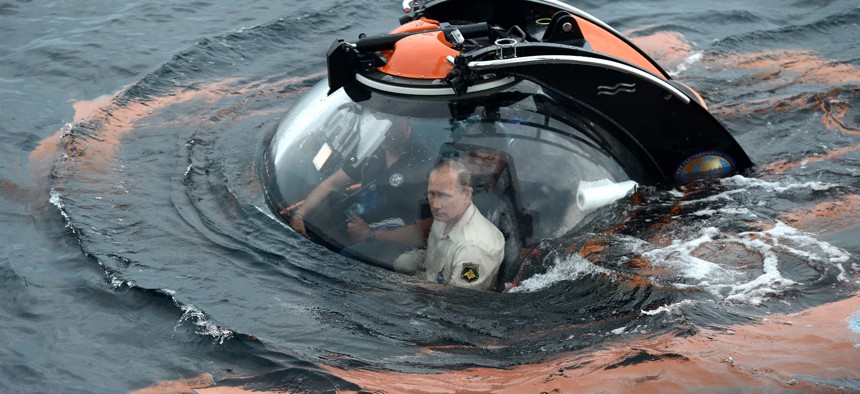
Russian President Vladimir Putin, center, sits on board a bathyscaphe as it plunges into the Black Sea along the coast of Sevastopol, Crimea, Tuesday, Aug. 18, 2015. alexei nikolsky/kremlin pool photo via ap
Russia’s Special Operators Are Getting Futuristic Mini-Subs
Originally designed for oil exploration, the six bathyspheres are to arrive by 2022.
The next time Vladimir Putin decides to put “little green men” in a country illegally, Spetsnaz troops might arrive in a futuristic deep-diving submarine, according to Russian media outlet Tass.
Originally commissioned by Gazprom for inspecting and working on underwater pipelines, the spherical submersibles — more properly called bathyscaphes — feature super-strong acrylic windows in a titanium frame. They can be transported to their missions aboard civilian or military ships, carry three troops to a depth of 2.5 kilometers, and run for a whole day on a single charge, Tass said.
This means the subs can “operate on the sea floor in many parts of the global ocean,” says Samuel Bendett, a researcher at the CNA Corporation and a fellow in Russia Studies at the American Foreign Policy Council. “The fact that there are no limitations on what vessel can carry it where means that there would be fewer limitations for the Russian special forces to act, via this deep-diving vessel.”
The Russian Navy has ordered six of the subs, which are expected to arrive by 2022 and be deployed to the Northern, Pacific, and Black Sea Fleet, Tass said.
The U.S. Navy is also developing manned combat submersibles for its SEALs. In 2016, Lockheed Martin received a $166 million contract to design and build new combat subs based on its commercial S301i commercial submersible. Testing is to be completed this year.
Patrick Tucker contributed to this report.



